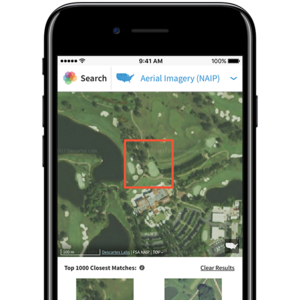
An Albuquerque startup that helps companies keep track of their physical assets recently struck a partnership with Sandia National Laboratories to research a new sort of passive microchip technology.
VastVision, the Albuquerque-based startup, combines a type of ultra-high frequency radio frequency identification, or UHF RFID, chip technology with a software platform to let companies track physical assets. The UHF RFID chips are attached to companies' assets, tracked by central terminal systems and then displayed on the software platform with information on how the assets move throughout a space.
While VastVision's current chip hardware allows companies to track assets anywhere from 3 inches to 50 feet away from terminal systems, Kyle Guin, the startup's co-founder and CEO, told New Mexico Inno partnering with Sandia for research will help it build a "next-generation of passive chips."
VastVision's partnership with Sandia National Labs is through a statewide program called the Technology Readiness, or TRGR, Initiative. It's a partnership between Sandia and Los Alamos National Laboratory, funded by the State of New Mexico, to allow New Mexico companies to access up to $150,000 in technical assistance from lab researchers.
The initiative, per its website, aims to help transition lab technologies to companies in the state "to produce high value goods and services to grow the technology-based economy." It functions as a gross receipts tax credit for the national laboratory that partners with a New Mexico-based company on a research and development or tech maturation agreement.
VastVision's work with Sandia under the TRGR Initiative is worth $150,000, Guin said, with a 12-month "performance period" that starts April 10. The startup's goal, he added, is to work with Sandia to design the blueprint for a fully functioning prototype of that next-generation chip technology, which VastVision would then use to manufacture those more advanced chips.
Guin hopes that next-generation chip technology would have advantages over the UHF RFID chips VastVision is currently using. Some of those advantages, he said, include being able to read the new chips through metal while being able to operate through liquid and underground, and the new chips would be protected from manipulation by consumer hardware, which is a threat posed to existing UHF RFID chip technology.
The new chips would also be "physically unique," Guin said. "You can essentially just imagine that each chip has its own unique thumbprint, and that's measured by the physical attributes of the chip."
VastVision's previous focus has been on trying to improve asset tracking from a software standpoint, Guin said. Partnering with Sandia for the chip research extends the startup's focus into improving the hardware side of asset tracking, as well.
"This is something that I have always wanted to do, personally, was pull something out of the labs that has potential and hopefully bring it to the light of day," Guin said. "We're just kind of innovating on both sides of the ball."
Many of VastVision's current users are in New York. That's because of an early strategic financing partnership the startup found with a New York City-based corporate relocation and furniture liquidation company.
For instance, the Albuquerque startup is currently working with the New York State Board of Elections to help track Americans with Disabilities Act-compliance componentslike wheelchair ramps required at voting sites. It's also tracking assets for NBCUniversal Inc. in New York and is starting work with the New York Department of Transportation.
But VastVision has some work in New Mexico, too, including with BlueHalo at the large aerospace and defense company's Albuquerque campus. Guin told New Mexico Inno in early February the startup is targeting 100 to 200 active subscriptions by the second quarter of 2024; subscriptions range from $250 to over $1,200 but vary depending on the specific customer's needs.
The startup has three full-time employees, including Guin and co-founder and chief technology officer Zachary Kirch, and works with a salesperson on a contractual basis. A few contractual engineers also work with VastVision; more hiring could come when the startup lands additional multi-year agreements with customers that would generate a lot more revenue for the company.
Securing more of those longer-term customer agreements is one of VastVision's primary focuses currently, Guin said. Another, he added, is product development on both the software and hardware side — which includes the cooperative chip research work with Sandia National Labs.









